The Very Beginning
1920s
1929
Frank Murdoch and Harry Kalish establish their individual law offices in a shared space at 1420 Walnut Street.
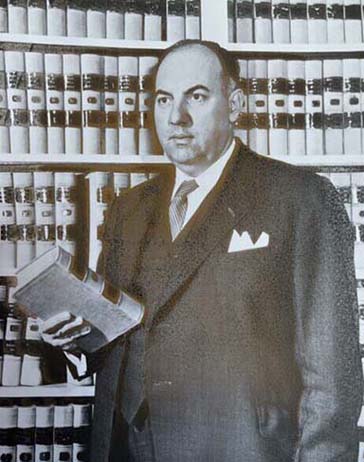
Frank Murdoch
Building a Practice of Esteemed Attorneys (1932 – 1939)
1930s
1933
Murdoch and Kalish approach H. Douglas Paxson with an idea to merge practices, thus founding the law firm of Murdoch, Paxson & Kalish on April 1, 1933. Upon the Firm’s creation, they move offices from Walnut Street to the 21st floor of the Fidelity building (Paxson & Paxson’s previous location).
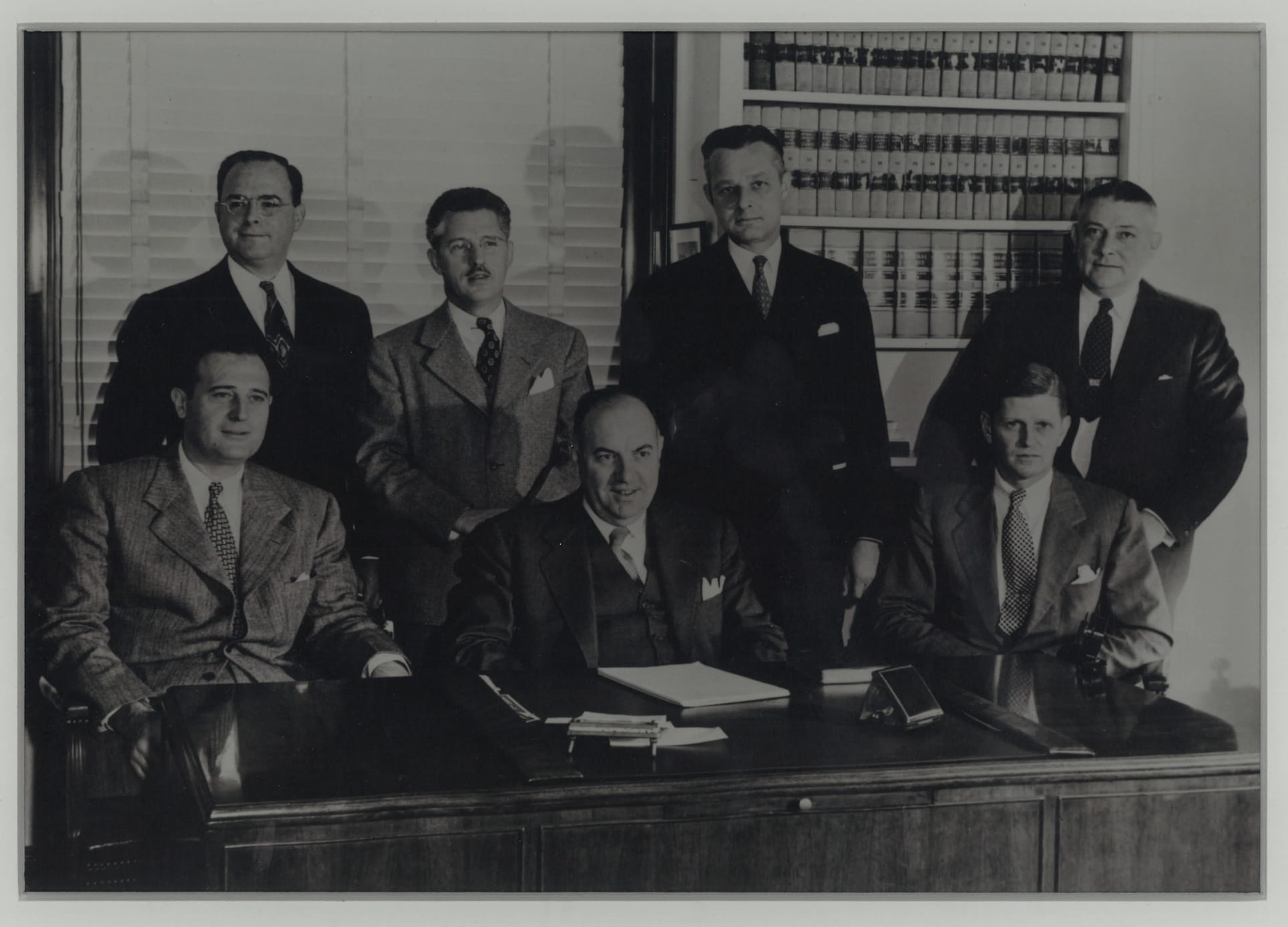
1934
Corporate attorney Robert Green becomes the Firm’s first addition. The Firm changes its name to “Murdoch, Paxson, Kalish & Green” and moves to the 26th floor of The Fidelity Building.
1935
The Firm more than doubles its size, from three to seven lawyers.
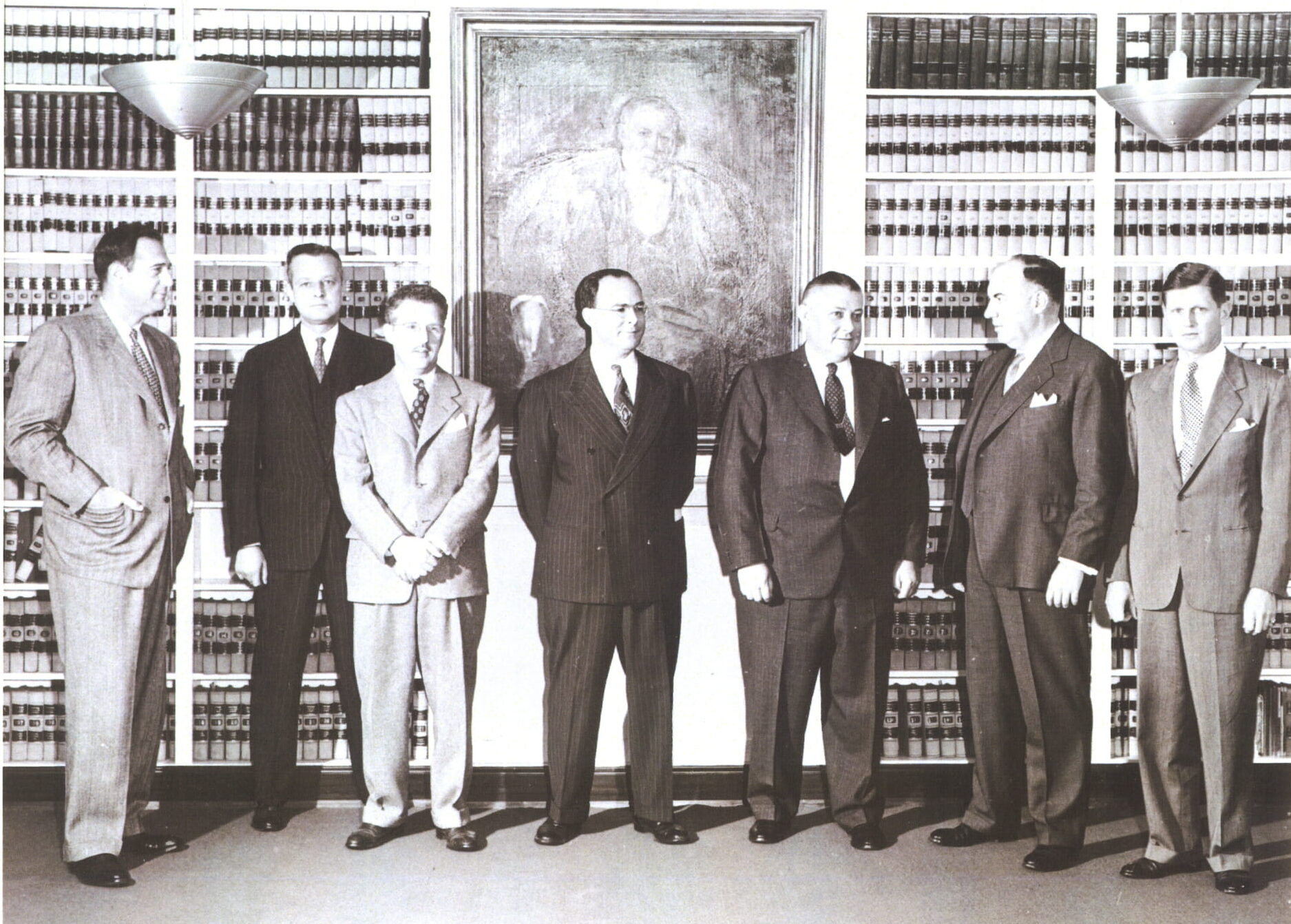
1938
Richardson Dilworth joins the Firm after solidifying himself as a great litigator at Evans, Bayard, & Frick. With him, Dilworth brings his largest client, the Annenberg family.
1939
After completing a trial period, Harold Kohn joins the Firm in January. He works closely with Dilworth, learning the law as Dilworth had from Ralph Evans, who had been taught by John G. Johnson. Kohn would go on to become a pioneering class action attorney, filing some of the earliest class action lawsuits accusing corporations of anti-competitive practices.
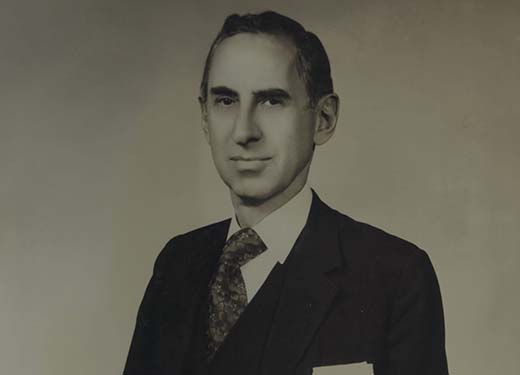
Harold Kohn
1939
Harold Dilks merges his practice with the Firm’s. Kalish and Dilworth join the war’s efforts. Dilworth, who had previously served in WWI in the Marine Corps, reenlists in the Marines. He is commissioned as an intelligence officer, rising to the rank of Major and serving in the South Pacific Theatre.
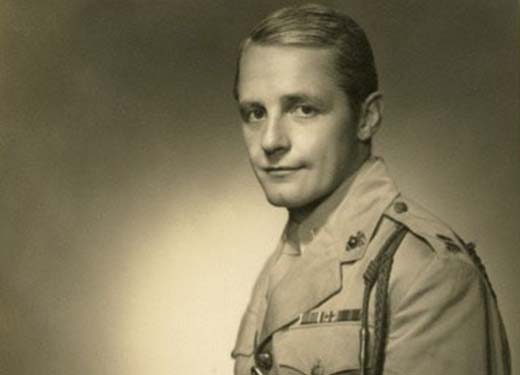
Dilworth in the South Pacific during WWII
1939
Kalish becomes a Judge Advocate General (JAG) of the Army/Airforce. Unable to enlist, Murdoch, Paxson, and Green maintain the practice, focusing mainly on real estate, tax assessment, and copyright/media matters.
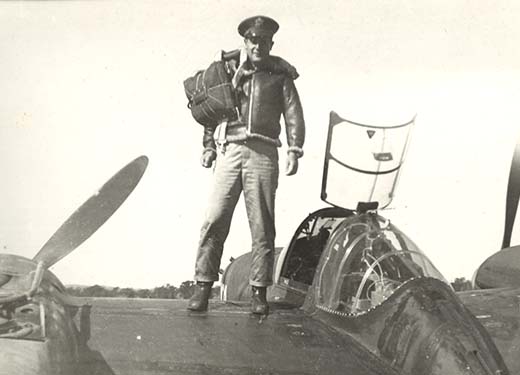
Kalish pictured on a P-38 Lighting during WWII
1940s
1945
Firm grows to 14 attorneys, with addition of several new attorneys including tax specialist Richard Levy, and Betty Hatton, one of the first female lawyers in the city. The Firm’s practice now includes business law, litigation, real estate, tax and estate matters.
1947
Marcus Manoff arrives, bringing with him labor and securities law experience. At this time, Murdoch also leaves. The Firm becomes “Dilworth, Paxson, Kalish & Green.” 75 years later, the names “Dilworth Paxson” remain integral to the firm’s identity.
1949
Dilworth and Joe Clark are elected City Treasurer and City Controller of Philadelphia, respectively. Over the next 12 years, Dilworth is largely absent from the Firm, while working full-time in various public offices.
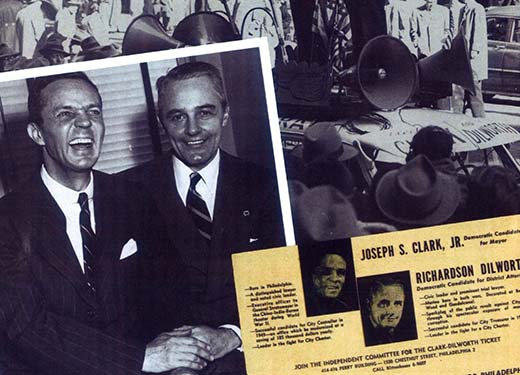
Dilworth and Clark via Pennsylvania Legacies, November 2011
1950s
1950
Kalish becomes counsel to Levitt & Sons and represents them in developing a new town, Levittown, PA. Levitt & Sons remains a client of the Firm for many years.

1951
Dilworth becomes the District Attorney of Philadelphia. He recruits William T. Coleman to join the Firm. A West Philadelphian, Coleman graduated from University of Pennsylvania and obtained his law degree from Harvard, where he was a member of the Harvard Law Review. Despite clerking for Felix Frankfurter of the United States Supreme Court, Coleman was unable to secure a job with a Philadelphia law firm due to his race. At the time when Coleman met Dilworth, he was an associate at Paul Weiss in New York City and commuting daily from his home in West Philadelphia. Coleman joins Dilworth’s litigation department and works with Kohn, eventually becoming the first African-American lawyer admitted as a partner in a Philadelphia law firm.
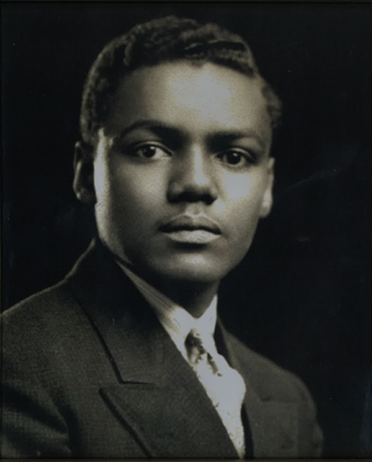
William T. Coleman
The Litigation Years
1954
Bill Coleman works on libel suits with the Firm, for The Inquirer and beyond. At this time, he also becomes a member of the Board of Directors of the NAACP’s Legal Defense Fund. A significant contributor to the Civil Rights Movement, Coleman’s most notable accomplishments include principal authorship of the Supreme Court brief in Brown v. Board of Education, and advancement of the argument that the doctrine of separate but equal failed as a matter of constitutional law. Following the Supreme Court’s decision in Brown v. Board of Education, Coleman undertakes the desegregation case against Girard College in the Philadelphia Orphan’s court, ultimately succeeding in invalidating the racial restrictions in the Stephen Girard will.
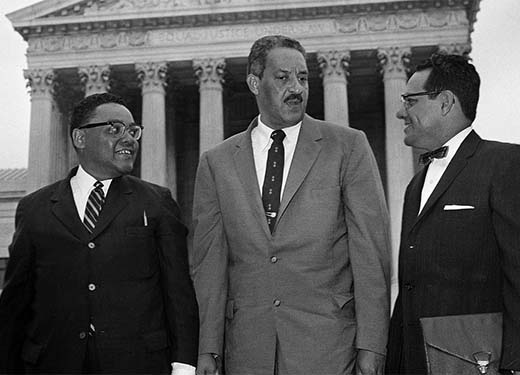
William T. Coleman, left, Thurgood Marshall and Wiley A. Branton, then lawyers for the N.A.A.C.P., in 1958 in Washington
1955
Dilworth is elected Mayor of Philadelphia. During his tenure, he makes the Firm counsel to Philadelphia Gas Works, in addition to other institutions.
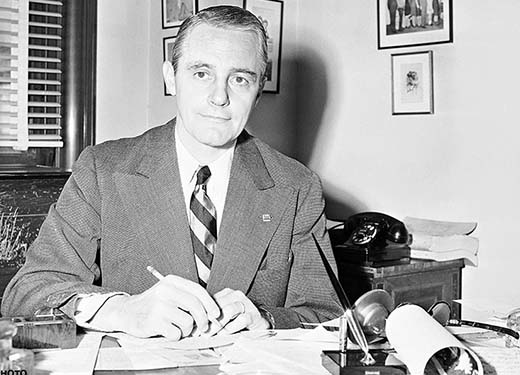
Richardson K. Dilworth
1956
Dolores Korman (later Dolores Sloviter) joins the Firm. Eventually she is made Partner, becoming among the first women partners in Philadelphia. Of her many contributions was handling one of the most significant is the Truckers’ case, which later becomes a landmark case. As a result of Kohn’s arguments during trial, the Noerr-Penningtone Doctrine emerges. The Firm also works on the Philadelphia Transit Company case, restructuring, forming a successor entity SEPTA as a quasi-governmental authority. In 1979, Sloviter becomes the first woman to serve on the Court of Appeals for the Third Circuit and only the fourth woman to serve on a United States Court of Appeals.
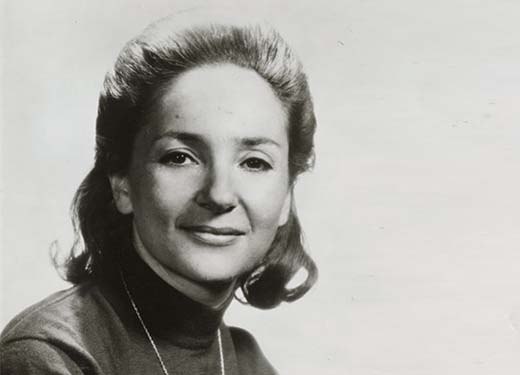
Dolores Korman
1956
Bill Heinrich joins the Firm. Henrich would become one of the preeminent trust and estate lawyers in Philadelphia and the personal counsel to Walter Annenberg.
1956
In the summer of 1956, after a European vacation, Mr. and Mrs. Dilworth returned home aboard the very popular Italian ocean liner SS Andrea Doria. On the evening of July 25, 1956, at about 11:15 PM, steaming toward New York just off Nantucket in a thick fog, the Andrea Doria was rammed by the Swedish ocean liner MS Stockholm. The Andrea Doria immediately began to sink. Dilworth is credited with helping to organize the evacuation efforts and saving numerous lives, utilizing his Marine Corps leadership skills. Of over 1700 passengers and crew aboard the Andrea Doria, only 46 perished in the disaster.
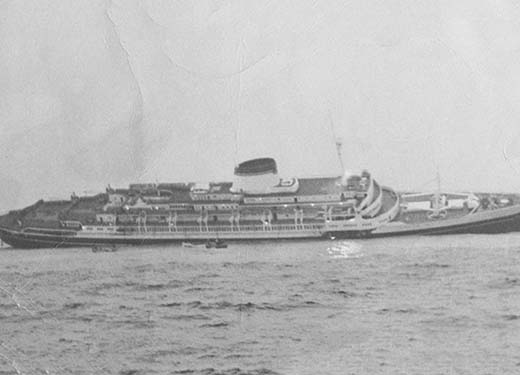
Sinking of the SS Andrea Doria
1957
Coleman, Fine and Hill make partner. Coleman becomes the first African American partner in a major Philadelphia law firm. Kohn argues the Sablosky case, winning $1.275 million for the Firm’s client. At this time, the Firm and Kohn become well-known for antitrust litigation.
1960s
1960
The Firm and Kohn become antitrust counsel for the Philadelphia Electric Company, in one of the largest antitrust disputes at that time. Over the next few years, Kohn, Fine, and Korman prepared for the case, before taking it to court in 1964 and winning $9.6 million in damages from the jury, and trebled to $28.9 million in accordance with the Clayton Act.

1962
Dilworth is elected President of the Philadelphia School Board. At this time, Bruce Kauffman joins the Firm and accompanies Dilworth on Yale Law recruiting trips.
1965
Stephen Harmelin and Joseph Jacovini join the Firm. Harmelin and Jacovini would go on to become among the most prominent corporate lawyers and civic leaders in Philadelphia, while serving as the backbone of the Dilworth firm for more than half-a-century.
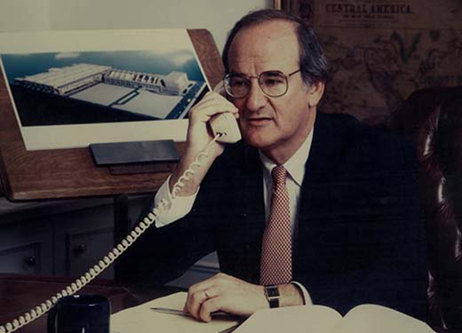
Stephen Harmelin
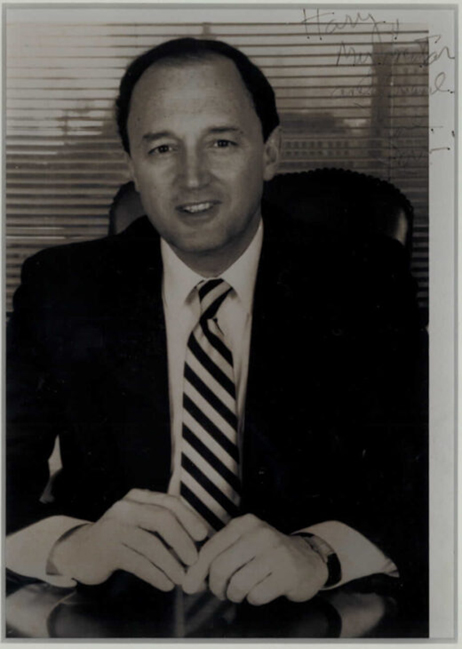
Joseph Jacovini
1969
The Firm acquires Korn & Cohen, thus bolstering the corporate department. At the same time, Kohn leaves and starts his own firm with four other Dilworth attorneys. They remained within the same offices until 1971, and keep an amicable relationship with Dilworth.
1970s
1970
Coleman becomes the head of the Litigation Department, continuing the growth of the litigation practice.
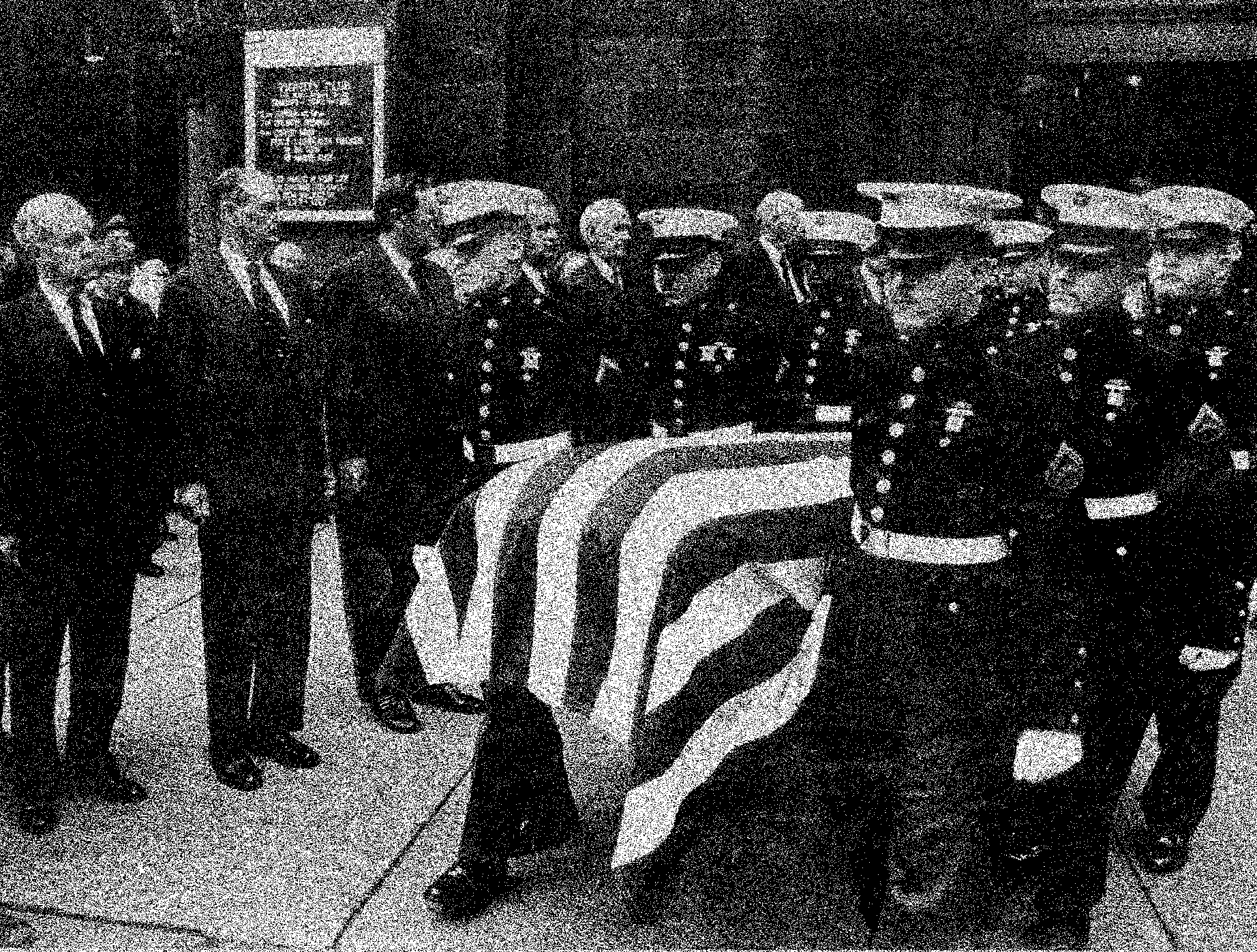
Richardson Dilworth's funeral
1975
Doug Paxson dies, leaving Kalish the last remaining of the founding partners. Coleman leaves the Firm to accept an appointment as Secretary of Transportation in President Gerald Ford’s cabinet.
1978
The Firm changes its name to Dilworth, Paxson, Kalish & Levy. Lawrence McMichael and Robert Casey join the Firm.
1979
Richard Levy dies. New leaders rise to carry out the past leadership’s legacy, including Kauffman, who becomes chair of the Litigation Department. Subsequently, the Firm changes its name to Dilworth, Paxson, Kalish, Levy & Kaufman. Later that year, Kauffman is appointed to the Pennsylvania Supreme Court by Governor Richard Thornburgh.
From 40 lawyers in 1970 to 100 in 1980, the Firm’s growth is substantial.
1980s
1986
Several partners and associates in Dilworth’s litigation department leave the firm, signaling the beginning of a tumultuous time in the firm’s history.
1987
Casey becomes Governor of Pennsylvania.
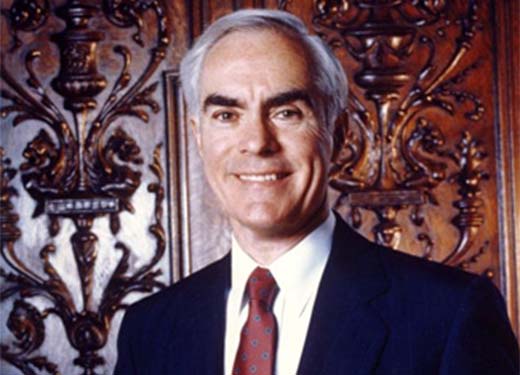
Robert P. Casey
1988
The Firm establishes an elected executive committee as its ultimate governing body. The firm represents Walter Annenberg in the $3 billion sale of Triangle Publications, publishers of TV Guide, Seventeen magazine and the Daily Racing Form to Rupert Murdoch, one of the largest transactions in Philadelphia history.
The Firm embarks on an expansion strategy which by 1990 grew the firm to 150 attorneys with offices from Florida to California
1990s
1991
Kaufmann engages in merger discussions with Wolf Block Schorr & Solis-Cohen. Ultimately, the merger never occurs. Kauffman stays with the Firm, but many partners leave for other firms in Philadelphia. On the brink of a possible dissolution, Kauffman, Jacovini and Harmelin rally the remaining attorneys to continue the Dilworth partnership. Today, many of Philadelphia’s largest law firms are led by Dilworth alumni.
1992
The firm moves its Philadelphia office to the Mellon Center, reduces down to 75 lawyers, amidst very tough economic times, and regroups to face the challenges and opportunities of the 1990’s
1995
Recommitting itself to a targeted strategy focused on the mid-Atlantic region, Dilworth establishes its second-largest office in Cherry Hill, New Jersey.
1997
As leadership evolves and changes, the Firm transitions to its current name, Dilworth Paxson, LLP.
President Bill Clinton appoints Kauffman as a United States District Court Judge for the Eastern District of Pennsylvania. Following a senate confirmation, Kauffman leaves the firm. Joseph Jacovini becomes chairman of the Firm, Harmelin becomes Managing Partner and Lawrence McMichael becomes Chairman of the Litigation Department.
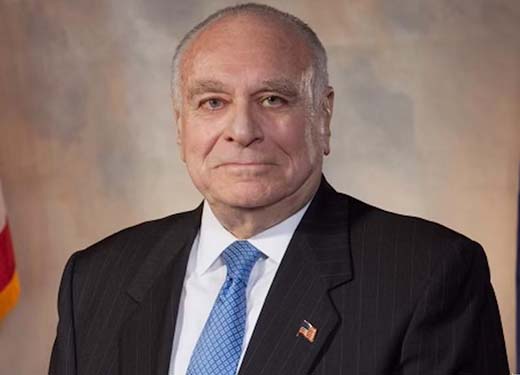
Judge Bruce Kauffman
2000s
2006
Jacovini and a team of corporate lawyers represent an ownership group in the acquisition of the Philadelphia Inquirer and Philadelphia Daily News.
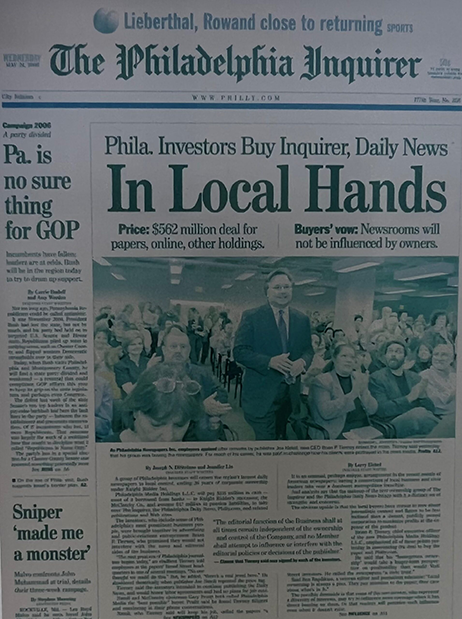
2008
Dilworth moves its Philadelphia office to the Centre Square building, which overlooks Dilworth Plaza, named after the Firm’s namesake, Richardson Dilworth
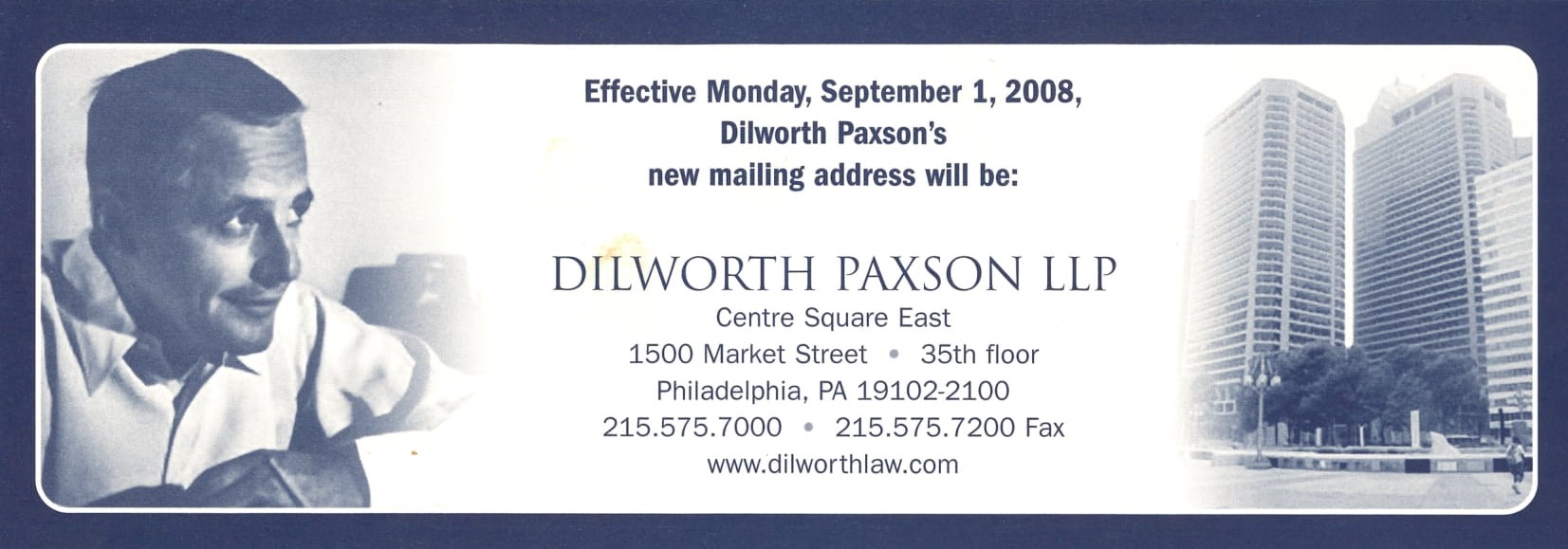
2009
McMichael and a team of bankruptcy lawyers file Chapter 11 petition for Philadelphia Newspapers LLC, publishers of the Daily News and Philadelphia Inquirer and owner of philly.com, later setting a national precedent in the Third Circuit Court of Appeals on the subject of credit bidding.
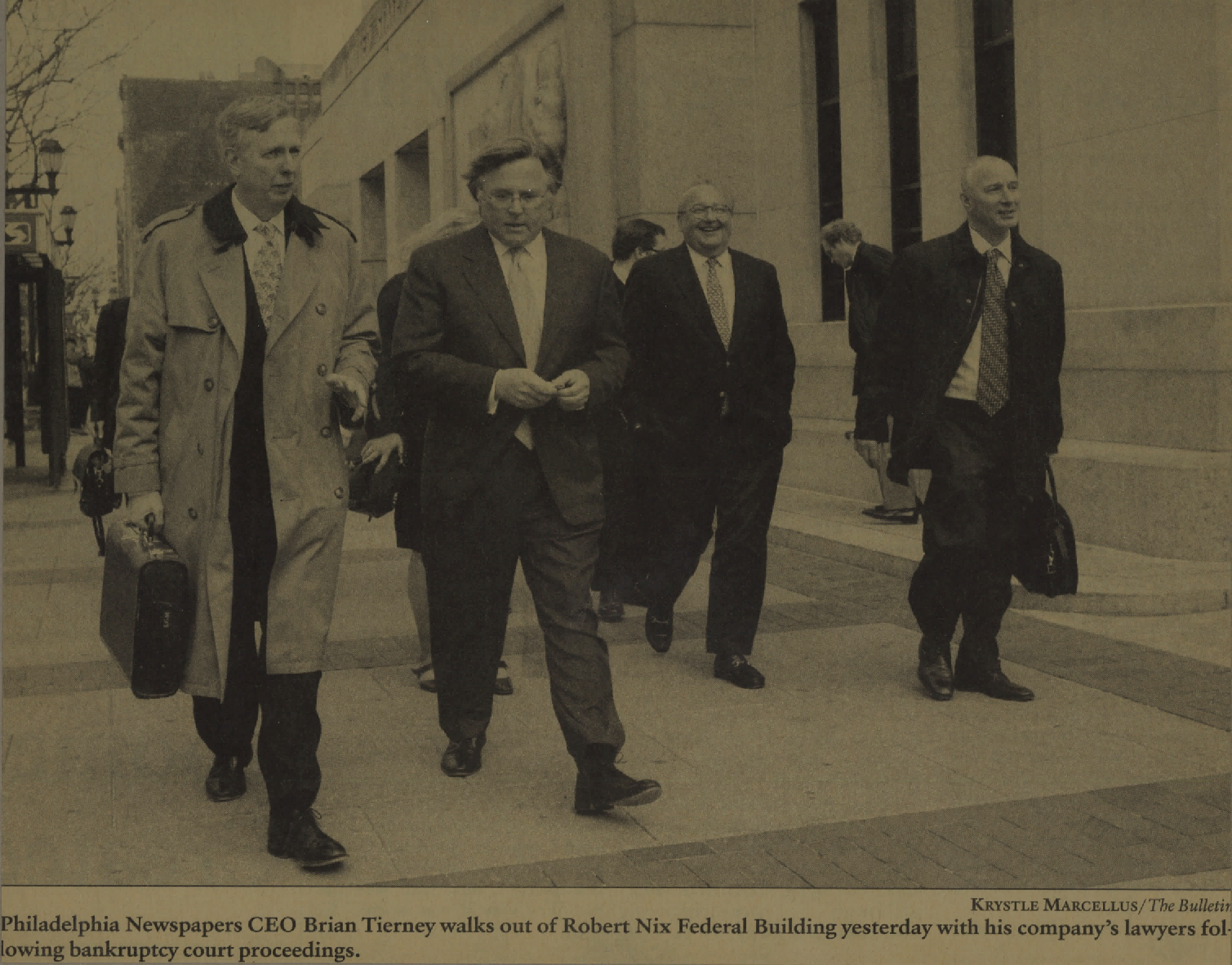
2010s
2011
McMichael and a team of bankruptcy lawyers file petition for Chapter 11 for Philadelphia Orchestra, which becomes the largest performance arts organization to seek bankruptcy relief. It is successfully reorganized.
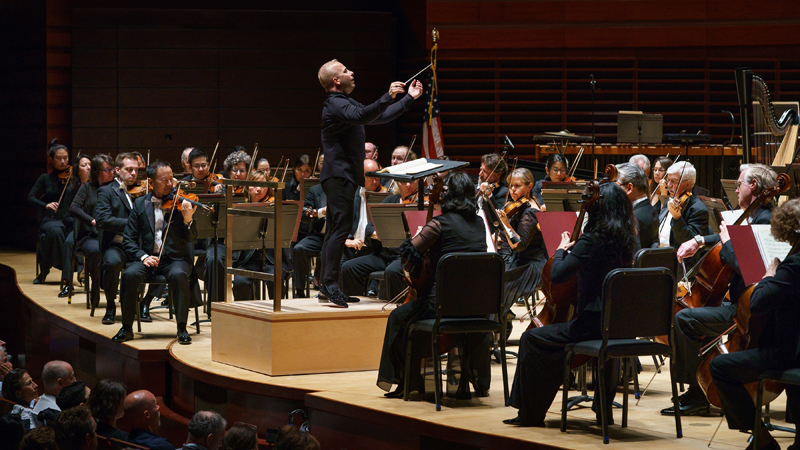
2012
After nearly a decade of litigation, the Barnes Foundation, a world-renowned art collection and education institution founded by the late Albert C. Barnes, moves to Philadelphia from suburban Lower Merion. Dilworth lawyers, led by Harmelin, represented the Foundation in defeating objections to the Foundation’s move.
2014
Ajay Raju joins the Firm and becomes Chairman after leaving Reed Smith, where he was the Managing Partner of the Philadelphia office. Raju is the first Indian-American to lead a major U.S. law firm. Jacovini becomes Chairman Emeritus and remains a member of the Firm’s Executive Committee, on which he continues to serve.
2015
The Firm merges with Smith Stratton, a prominent New Jersey litigation practice, to establish Dilworth’s Princeton, New Jersey office. The firm now has offices in Philadelphia, Cherry Hill, Princeton, Harrisburg, Wilmington and New York.
2020s
2020
McMichael becomes Chairman of the Firm, while maintaining his practice.

Lawrence McMichael
2020
In the midst of the global COVID-19 pandemic, Dilworth temporarily transitions to a remote working environment, while continuing its over 85-year tradition of legal excellence and community service.
2021
Kauffman dies at 86. In addition to serving Dilworth for 16 years, Kauffman was appointed as a U.S. District Judge in Philadelphia by President Bill Clinton.
2022
As the region and the country continue to move past the shutdowns caused by the COVID-19 pandemic, Dilworth attorneys and employees return to the office on a flexible hybrid work schedule.
2023
Dilworth Celebrates 90 Years – A Legacy of Diversity, Inclusion & Community Service.
GluckWalrath joins the Firm. The addition of GluckWalrath’s twelve attorneys diversifies Dilworth’s existing public finance, corporate and healthcare practices, while expanding its presence into the central New Jersey market. The firm now has offices in Philadelphia and Harrisburg Pennsylvania; Cherry Hill, Freehold and Princeton, New Jersey; New York City; and Wilmington, Delaware.
Kristen Behrens is elected Co-Managing Partner, marking a significant milestone as the first female to be named to this role in Dilworth’s 90-year history.
Dilworth grows to over 120 lawyers with the addition of 16 attorneys from the recently-dissolved firm of Schnader, Harrison, Segal & Lewis, increasing depth and experience in the firm’s Litigation, Transactional/Real Estate and Trusts & Estates practices.
Dilworth Celebrates 90 years

Kristen Behrens
2025
The Firm moves its Philadelphia office to its current location at One Liberty Place.
Harmelin dies at age 85. After starting his career as a speechwriter for President Lyndon B. Johnson, Harmelin spent more than 50 years at Dilworth, specializing in corporate law, securities, and financial transactions. In addition to his work with the Barnes foundation, Harmelin’s numerous civic contributions while at Dilworth included helping to found the National Constitution Center and Pennsylvania Convention Center in Philadelphia, aiding the FBI in a sting operation that resulted in the successful recovery of an original copy of the Bill of Rights to the United States Constitution, and assisting the National Constitution Center in working with the New York Public library to share ownership of what is believed to be Pennsylvania’s copy of the Bill of Rights.

